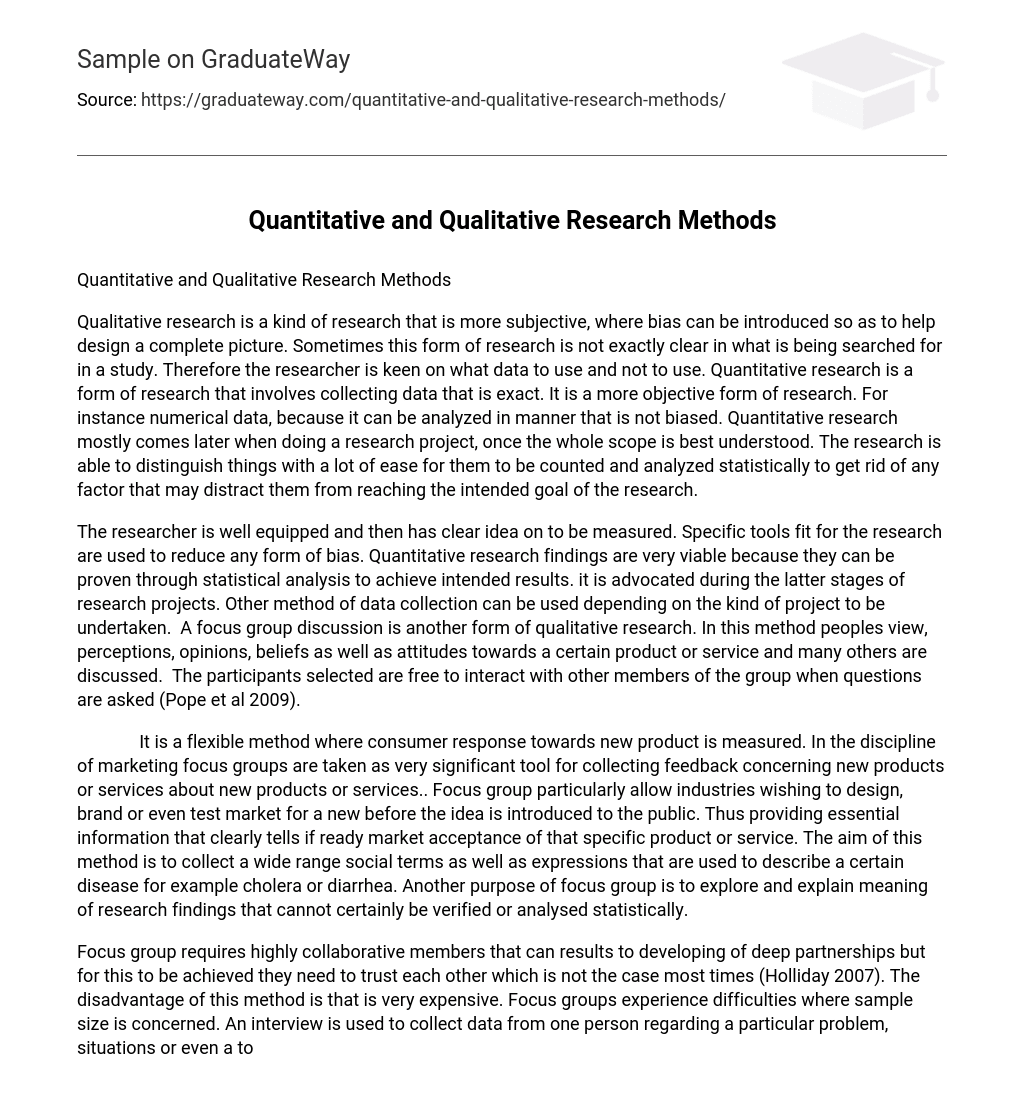Qualitative research is a kind of research that is more subjective, where bias can be introduced so as to help design a complete picture. Sometimes this form of research is not exactly clear in what is being searched for in a study. Therefore the researcher is keen on what data to use and not to use. Quantitative research is a form of research that involves collecting data that is exact. It is a more objective form of research. For instance numerical data, because it can be analyzed in manner that is not biased. Quantitative research mostly comes later when doing a research project, once the whole scope is best understood. The research is able to distinguish things with a lot of ease for them to be counted and analyzed statistically to get rid of any factor that may distract them from reaching the intended goal of the research.
The researcher is well equipped and then has clear idea on to be measured. Specific tools fit for the research are used to reduce any form of bias. Quantitative research findings are very viable because they can be proven through statistical analysis to achieve intended results. it is advocated during the latter stages of research projects. Other method of data collection can be used depending on the kind of project to be undertaken. A focus group discussion is another form of qualitative research. In this method peoples view, perceptions, opinions, beliefs as well as attitudes towards a certain product or service and many others are discussed. The participants selected are free to interact with other members of the group when questions are asked (Pope et al 2009).
It is a flexible method where consumer response towards new product is measured. In the discipline of marketing focus groups are taken as very significant tool for collecting feedback concerning new products or services about new products or services.. Focus group particularly allow industries wishing to design, brand or even test market for a new before the idea is introduced to the public. Thus providing essential information that clearly tells if ready market acceptance of that specific product or service. The aim of this method is to collect a wide range social terms as well as expressions that are used to describe a certain disease for example cholera or diarrhea. Another purpose of focus group is to explore and explain meaning of research findings that cannot certainly be verified or analysed statistically.
Focus group requires highly collaborative members that can results to developing of deep partnerships but for this to be achieved they need to trust each other which is not the case most times (Holliday 2007). The disadvantage of this method is that is very expensive. Focus groups experience difficulties where sample size is concerned. An interview is used to collect data from one person regarding a particular problem, situations or even a topic. There are two types of interviews structured and semi- structured. Responses obtained from this form interview can be verified statistically and interpret since uniformity in questions tend to gain a narrower range feedback. Semi- structured interviews are designed to use open ended questions to cover broad issues in a manner that is not direct. Although interviews can help develop rapport with buy-in form respondents its on the other hand hard to schedule and also requires qualified and skilled interview.
(Retrieved http://www.gifted.uconn.edu/siegle/research/Qualitative/qualquan.htm on 30 April 2010 at 5:00pm).
Reliability is a term used to show the consistency of a measuring instrument. It is the capability of an instrument producing the same results after several trials. It is an essential aspect especially for detecting change. Test –retest reliability and reliability within a scale are the forms of reliability (Myers 2007).
Validity shows that what is being measured was just as intended. It shows the strength of a research’s proposition, conclusions and inferences. It measures the accuracy of the research instrument and in this case the questionnaire. A questionnaire can only be valid if it is reliable. A valid questionnaire ought to measure what it was intended to.
In conclusion, the major difference between validity and reliability is in the definition. Validity is more concerned with the accuracy of the instrument rather than the reliability which only estimates the measurement’s consistency. Validity is more important than the reliability of a research instrument (Myers 2009).
REFERENCES
Holliday, A, 2007, Doing and Writing Qualitative Research, 2nd Edition. Sage Publications, London.
Pope, C, & Mays N, 2009. Qualitative Research in Health Care, BMJ Books, London
Myers, M, 2009, Qualitative Research in Business & Management. Sage Publications, London.
Myers, M, and Newman, M, 2007, “The qualitative interview in IS research, Sage Publications, London.
http://www.gifted.uconn.edu/siegle/research/Qualitative/qualquan.htm Retrieved on 30 April 2010 at 5:00pm





